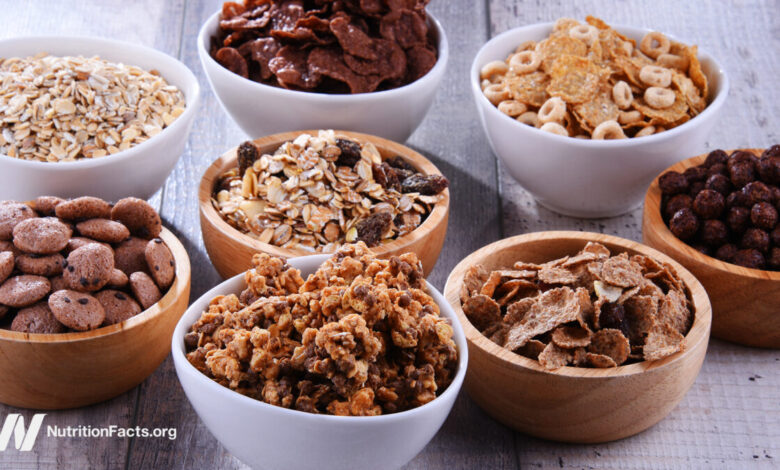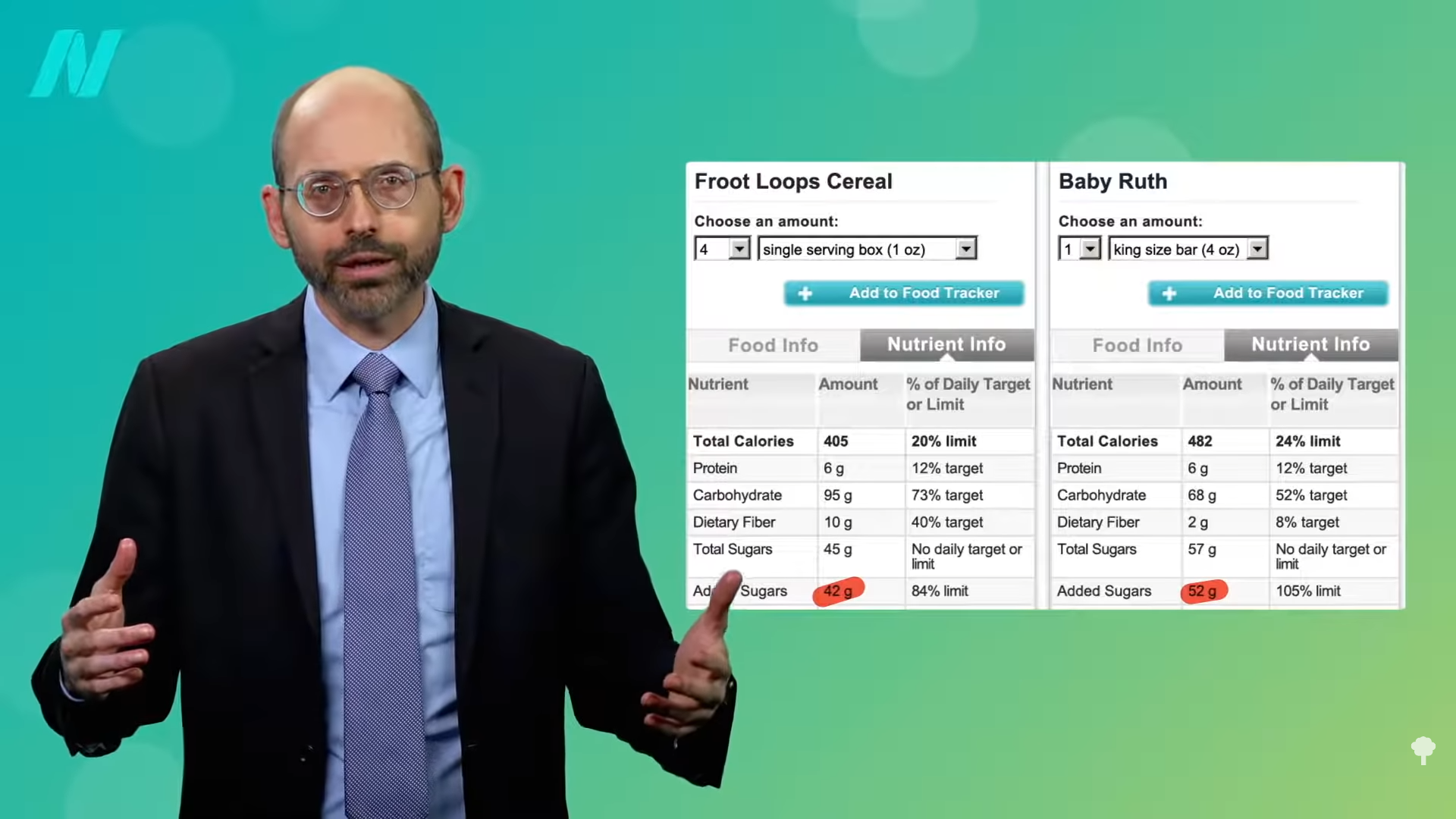Children’s Cereals: Candy for Breakfast?

Plastering front-of-package nutrient claims on cereal boxes is an attempt to distract us from the incongruity of feeding our children multicolored marshmallows for breakfast.
The American Medical Association started warning people about excess sugar consumption more than 75 years ago, based in part on our understanding that “sugar supplies nothing in nutrition but calories, and the vitamins provided by other foods are sapped by sugar to liberate these calories.” So, added sugars aren’t just empty calories, but negative nutrition. “Thus, the more added sugars one consumes, the more nutritionally depleted one may become.”
Given the “totality of publicly available scientific evidence,” the Food and Drug Administration (FDA) decided to make processed food manufacturers declare “added sugars” on their nutrition labels. The National Yogurt Association was livid and said it “continues to oppose the ‘added sugars’ declaration,” since it needed “‘added sugars’ to increase palatability” of its products. The junk food association questioned the science, whereas the ice cream folks seemed to imply that consumers are too stupid to “understand or know how to use the added sugar declaration,” so it’s better just to leave it off. The world’s biggest cereal company, Kellogg’s, took a similar tact, opposing it so as not “to confuse consumers.” Should the FDA proceed with such labeling against Kellogg’s objections, the cereal giant pressed that “an added sugars declaration…should be communicated as a footnote.” It claimed that its “goal is to provide consumers with useful information so they can make informed choices.” This is from a company that describes its Froot Loops as “packed with delicious fruity taste, fruity aroma, and bright colors.” Keep in mind that Froot Loops has more sugar than a Krispy Kreme doughnut, as you can see in the graph below and at 1:46 in my video Friday Favorites: Kids’ Breakfast Cereals as Nutritional Façade.

Froot Loops is more than 40 percent sugar by weight! You can see the cereal box’s Nutrition Facts label below and at 1:50 in my video.

The tobacco industry used similar terms, such as “light,” “low,” and “mild” to make its products appear healthier—before it was barred from doing so. “Now sugar interests are fighting similar battles over whether their terminology, including ‘healthy,’ ‘natural,’ ‘naturally sweetened,’ and even ‘lightly sweetened,’ is deceptive to consumers.”
But if you look at the side of a cereal box, as shown below and at 2:13 in my video, you can see all those vitamins and minerals that have been added. That was one of the ways the cereal companies responded to calls for banning sugary cereals. General Mills defended the likes of Franken Berry, Trix, and Lucky Charms for being fortified with essential vitamins.

Sir Grapefellow, I learned, was a “grape-flavored oat cereal” complete with “sweet grape star bits”—that is, marshmallows. Don’t worry. It was “vitamin charged!” You can see that cereal box below and at 2:31 in my video.

Sugary breakfast cereals, said Dr. Jean Mayer from Harvard, “are not a complete food even if fortified with eight or 10 vitamins.” Senator McGovern replied, “I think your point is well taken that these products may be mislabeled or more correctly called candy vitamins than cereals.”
Plastering nutrient claims on cereal boxes can create “a ‘nutritional façade’ around a product, acting to distract attention away” from unsavory qualities, such as excess sugar content. Researchers found that the “majority of parents misinterpreted the meaning of claims commonly used on children’s cereals,” raising significant public health concerns. Ironically, cereal boxes bearing low-calorie claims were found to have more calories on average than those without such a claim. The cereal doth protest too much.
Even candy bar companies are getting in on the action, bragging about protein content because of some peanuts. Like the Baby Ruth, a candy bar that has 50 grams of sugar. Froot Loops could be considered breakfast candy, as the same serving would have 40 sugar grams, as you can see below and at 3:45 in my video.

Given that “research suggests that consumers believe front-of-package claims, perceive them to be government-endorsed, and use them to ignore the Nutrition Facts Panel,” there’s been a call from nutrition professionals to consider “an outright ban on all front-of-package claims.” The industry’s short-lived “Smart Choices” label, as you can see below and at 4:13 in my video, was met with disbelief when it was found adorning qualifying cereals like Froot Loops and Cookie Crisp. The processed food industry spent more than a billion dollars lobbying against the adoption of more informative labeling (a traffic-light approach), “opposing most aggressively the use of a red light suggesting that any food was too high in anything.”

I was invited to testify as an expert witness in a case against sugary cereal companies. (I donated my fee, of course.) Check out the related posts below for a video series and blogs that are a result of some of the research I did.
You may also be interested in videos and blogs on the food industry; see related posts below.


